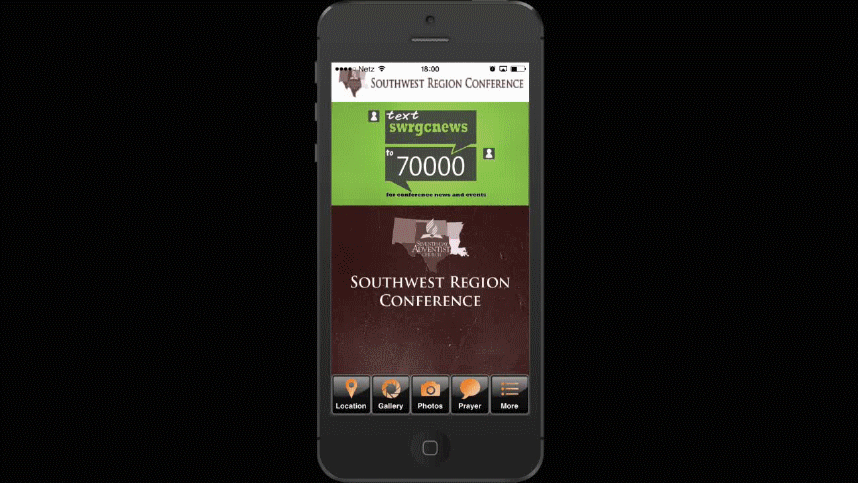
Sharing Christ through Mobile Ministry
 If you are a church or ministry leader, ask yourself a very important question:
If you are a church or ministry leader, ask yourself a very important question:
Is mobile technology central to my ministry’s vision?
The use of mobile technology for ministry–or “mobile ministry”–is more than a buzzword; it is fast becoming an essential approach to spreading the Gospel. That’s because mobile phones and other portable, wireless devices are proliferating the planet, making it all the easier to fulfill the Great Commission (Mark 16:15).
[divider]
Technology and your organization
From the days of the ancient prophets to now, there has been a steady, and sometimes rapid, evolution of the methods used to share God’s message. From paper, to the telephone, to the radio and TV, the medium has become increasingly complex. Now we have smartphones, which contain more computing power than the high-end personal computers from just a decade ago.
But don’t let technology scare you. At the end of the day, technology is just a tool used to solve problems. Mobile technology helps you solve the problem of reaching your members and followers through a medium that most of them always have in their possession. The key is to diversify your toolkit.
Why mobile ministry matters
Technology may evolve, but the mission–the Great Commission–remains the same: to go, preach, teach, and baptize. But how you carry out that mission depends on your ministry’s vision, the guiding principle that informs the specific message, goals, programs, and projects. For churches, the vision is often tailored to the demographics of the membership or the surrounding community.
A ministry’s message is carried out by People, Processes, and Technology. Individually and together, these “messengers” must also be adept at collecting feedback from the people the message has reached. It’s not two The more effective your ministry is integrating and overlapping these three, the greater will be your capacity for growth. Note, however, that culture can limit that growth. Culture, however, also evolves, so be ready to refocus and adapt to the changes.
The users, and uses, of mobile technology
Young or old, our present culture is mobile. More than 6 billion mobile devices roam the Earth, and more than 238 million of them live in the US. The fastest growth in mobile-phone use is occurring in some of the least developed countries. And since the launch of the Apple iPad, the use of mobile tablets is on the rise.
People use their mobile devices in almost everything they do. So how can your church use mobile ministry to meet the needs of its members and visitors? Here are just a few examples:
- Emergencies:The 2013/2014 winter in the US has been harsh; churches with an active mobile ministry have been able to instantly let members know whether or not prayer meeting has been cancelled
- Donations: As cybersecurity improves, people are finding “online giving” more convenient to return tithes and offerings. And if convenience is the motive, what’s more convenient than mobile?
- Evangelism Follow up: You’ve planted the seed of the Gospel in someone’s heart; if you were wise enough to collect their cell phone number, you’d have an easy and informal way to water the seed and watch it grow
- Find your location: A visitor gets lost trying to find her way to your church. If your church’s mobile website is ready for primetime, she can go to it (or to your church app) and map her way using her phone’s GPS
[divider]
Apps, text messages and mobile-friendly websites
Information exchange on mobile devices typically happens through text messaging (SMS), mobile apps, or mobile websites.
Mobile Text
The best known feature of mobile phones, text messaging is highly effective as a marketing tool: 98% of all text messages are opened (compared to less than 15% for email). One popular way to use Mobile Text in your ministry is get a shortcode, a type of texting address. Users can text specific words to the shortcode to subscribe to your content, reply to poll questions during a sermon, sign up for small groups, and much more. (Pro-tip: Check out CrossMRKT for a quick, easy setup for your mobile communication needs!)
See also: “Five Ways Churches Can Use Text Messaging”
Mobile Apps
The key distinction between Mobile Text and Mobile Apps is the length of time users spend with them. Roughly 25% of users say they spend more than 30 minutes each day with apps, and that time has been skyrocketing in recent years. (Pro-tip: Check out PocketPew for cost effective, high quality mobile app services!)
Some tools ministry content and tools found in the typical church app are: sermon links; a prayer wall; the church bulletin; a photo gallery; and directions and a map.
See also: How to make your ministry’s mobile app work for you
Mobile-friendly Websites
It’s not enough to have a plain old website. If your website was designed for a regular computer and screen, it won’t look, or perform, right on a smaller, sometimes slower mobile device….unless it’s a mobile-friendly website.
In addition to a design optimized for speed and size, a mobile-friendly website will display the church’s most essential content: for example, its location, it’s general services, an online giving link, and the bulletin.
One size does not fit all
Again, like most technologies, even mobile devices fail, break, or become less efficient. So make sure your vision for your mobile ministry includes a strategy and a budget for technology improvements. And remember:
Sometimes the tool changes: Keep up!
Sometimes the culture changes: Strategize!
Sometimes the tool works just fine: Keep consistent!
Sometimes the tool breaks: Revamp!
[Tweet “Sharing Christ through Mobile Ministry – useful tips!”]
[ois skin=”FB Eguide Optin”]



The key is changing the way the unchurched perceive the church. See “American Gothic Church: Changing the Way People See the Church”.
Interesting new book on changing the way the un-churched see the church. This author suggests that the mental picture people outside of the church have for Christians is similar to the American Gothic painting by Grant Wood with the man holding pitchfork standing beside his daughter. They see the church as judgmental, out of touch, strict and irrelevant. He suggests that this perception must be addressed and changed by being an encouraging, joyful, and compassionate people.
http://www.virtualbookworm.com/mm5/merchant.mvc?Screen=PROD&Product_Code=american_gothic_church&Store_Code=bookstore
I 100% agree. Do you see technology as helping get that message out? Churches need a medium to better communicate with a mobile and social generation. The biggest group to convince are the millennials and stats suggest that the best way to do it is through the tone you suggest but through social and mobile means. Wdyt?
I love mobile technology! My church uses Continue to Give’s mobile service. I can donate to all the different projects my church is doing and setup my weekly tithe. As a giver I like it because it is quick and easy. Plus my church as told me that they receive 99.5% of the donation I give which makes me feel better that even though I want to use technology to give it isn’t at the cost of the church. https://www.continuetogive.com
The biggest problem I have is when church websites don’t work (aren’t formatted or something) on my iphone. It’s very annoying. Churches should also have a text to give option for giving only. No communication through text unless it’s small group stuff.